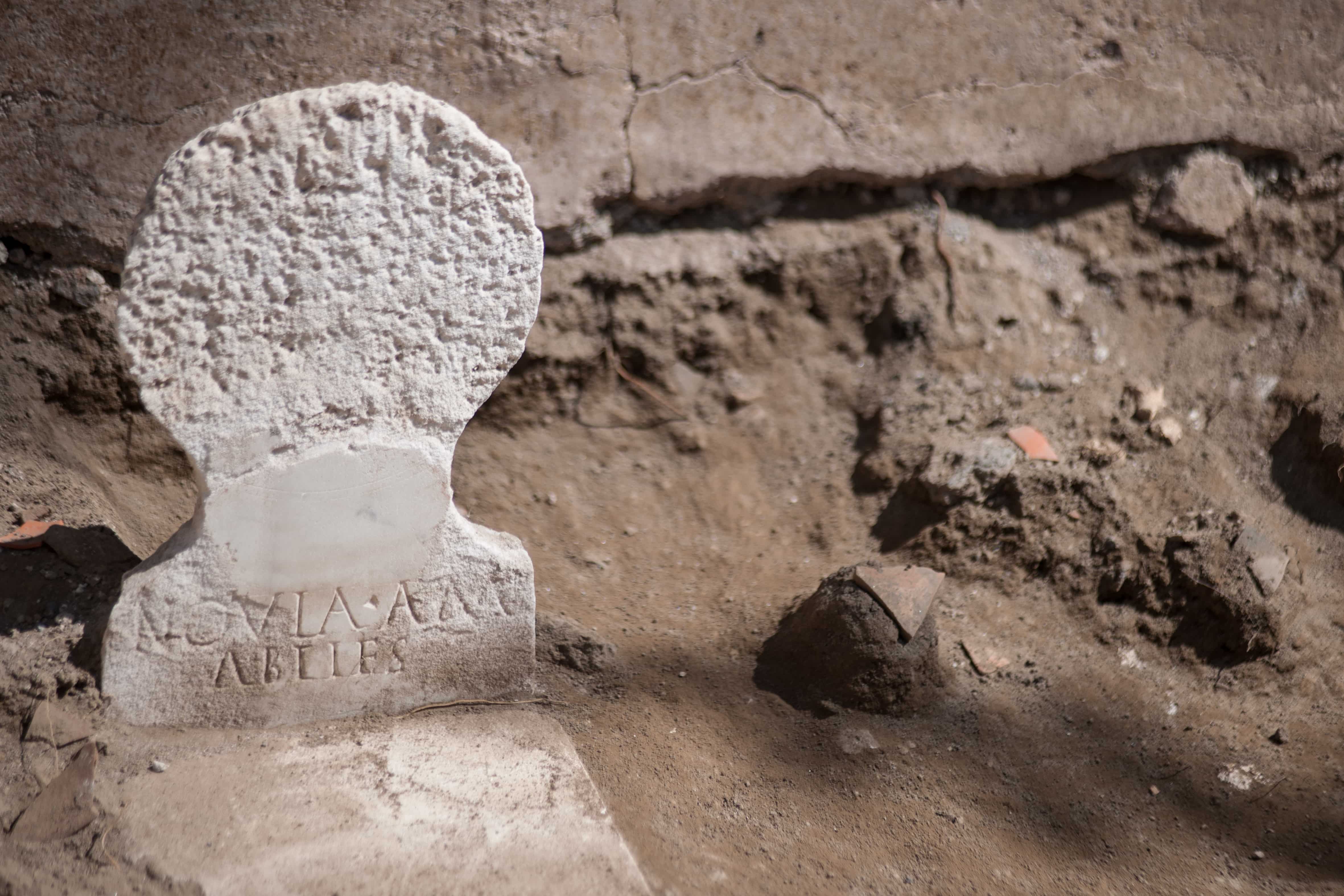
The unique tomb of a freedman whose remains are partially mummified has been unearthed in the Porta Sarno necropolis just outside the east gate of Pompeii’s city walls. Laid to rest in the decades preceding the eruption of Vesuvius, the body is one of the best preserved ever found in Pompeii.
The tomb is a masonry walled enclosure with a triangular pediment. Traces of polychrome paint survive on the exterior. It is faded, but seems to have been a garden scene. The deceased was inhumed in a small cell behind the main façade that was so effectively sealed that organic remains were preserved, including part of one ear, his hair and numerous textile fragments.
An inscription on a marble slab embedded in the pediment identifies the deceased as Marcus Venerius Secundio, a former public slave employed as the custodian of the Temple of Venus and as an attendant of the Augustali, the order of priests dedicated to the cult of the Divine Augustus and the Julii. After he was manumitted, he came to hold prominent religious and political positions in Pompeii. He became an Augustale, joining the priesthood he had once served, and he “gave Greek and Latin ludi the lasted for four days.” There are inscriptions in Greek and of course the Roman elite spoke it, but this inscription is the first direct evidence of a spectacle in Pompeii having been staged in the Greek language.

Inhumation was a rare funerary practice for Roman adults in the 1st century. Marcus Venerius was more than 60 years old when he died. He shared the tomb with two other individuals, only they were cremated as per standard operating procedure. Two cineraryurns
 were found in the wider enclosure, not in his cell. One of them, a beautiful blue-green glass vessel, is identified by a columella (a stone funerary marker used in the Sarno Valley) with the name Novia Amabilis. Archaeologists believe she may have been Marcus’ wife.
were found in the wider enclosure, not in his cell. One of them, a beautiful blue-green glass vessel, is identified by a columella (a stone funerary marker used in the Sarno Valley) with the name Novia Amabilis. Archaeologists believe she may have been Marcus’ wife.

The human and organic remains have been removed to Pompeii’s laboratory where they will be analyzed and conserved. Researchers hope to discover if this was deliberate mummification or a natural side-effect of the tomb’s hermetic seal.





